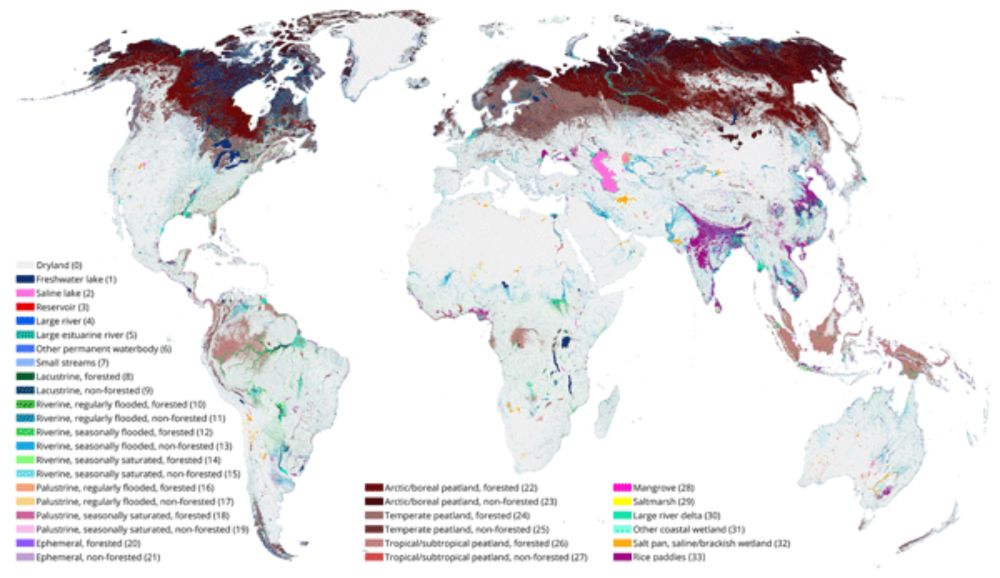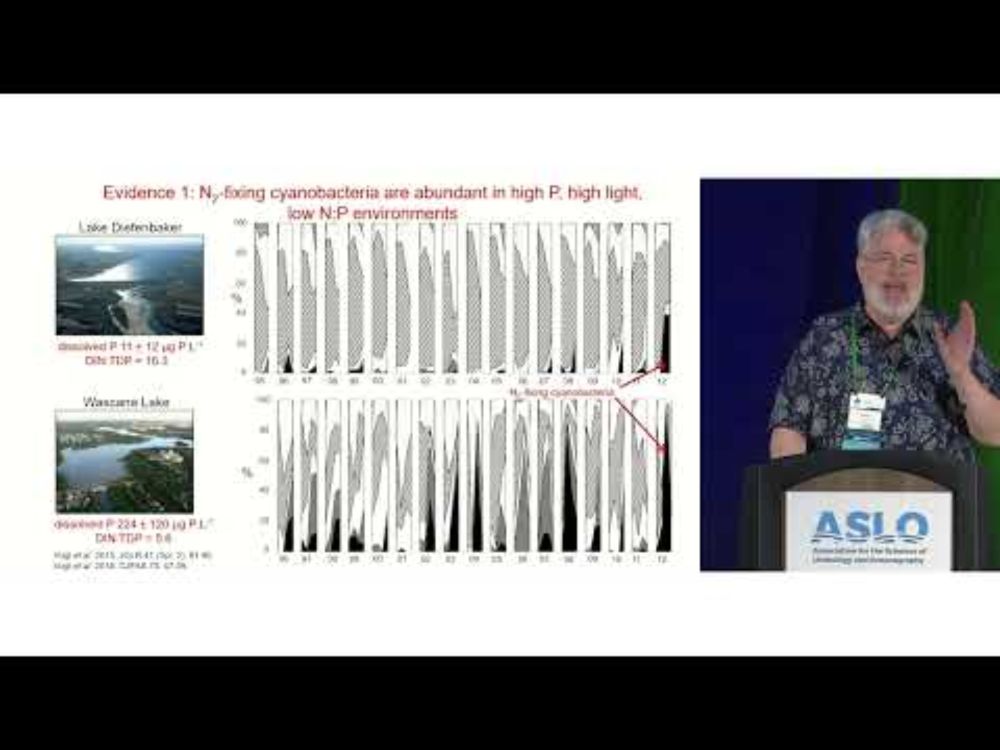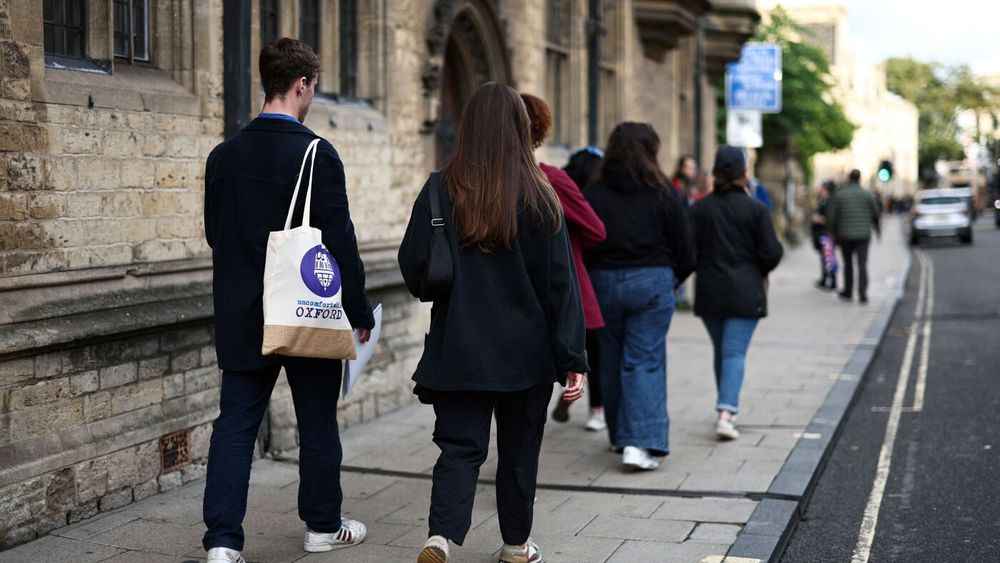
UK's first rice crop ripe for picking after hot summer
Paddy fields are thriving in a quiet part of east England and might help feed us in the future.
Dismissed as a joke, UK's first rice crop ripe for picking after hot summer
www.bbc.com/news/article...
"The trial is trying to answer big questions about how we can produce enough food and protect farmer's livelihoods in a world being altered by climate change."
30.09.2025 07:26 — 👍 4 🔁 4 💬 0 📌 0

per capita ev benefits by USA county - This figures contains estimates of the current per capita benefits of EVs in counties across the U.S.
We use the statewide total number of EVs from the U.S. Department of Energy for 2023. We include plug-in
Hybrid EVs in this calculation. We allocate EVs across all counties according to the share of EV charging ports
within the state located in that county. The locations of EV charging ports are from the Joint Office of Energy
and Transportation and are current as of March 2025. We then calculate the share of all personal vehicles in
the county that are EVs using the 2019-2023 American Community Survey. We then multiply this share by
the potential benefits of 100% EVs according to the analysis in Table 9.
The Traffic Noise Externality: Costs, Incidence and Policy Implications
Moretti+
eml.berkeley.edu/~moretti/noi...
"aggregate economic cost of traffic noise at $110 billion" in USA
a "shift to electric vehicles...could yield noise reduction benefits of $77.3 billion"
30.09.2025 07:37 — 👍 1 🔁 1 💬 0 📌 0

Tropical cyclone. Stock photo.
The rate of expansion of tropical cyclones increases with the relative sea surface temperature (SST), which is the difference between local SST and the tropical mean temperature. These changes in relative SST will complicate storm forecasting. In PNAS: www.pnas.org/doi/10.1073/...
29.09.2025 19:54 — 👍 4 🔁 2 💬 0 📌 1

Overhead view of a forest. Stock photo.
Plants cool the land through evapotranspiration, but green foliage can absorb more heat than lighter surfaces, causing warming. A study finds that in the northern hemisphere, cooling outweighs warming until the end of the growing season. In PNAS: www.pnas.org/doi/10.1073/...
24.09.2025 21:20 — 👍 29 🔁 8 💬 1 📌 0

Revisiting Patterns and Controls of Productivity in a Mesic Grassland 30 Years Later: Do We Know Now What We Knew Then? - Ecosystems
Given the rapid pace of global change, determining if our past understanding of the controls of ecosystem structure and function remains robust today is essential for managing and conserving ecosystems. Here, we revisit a foundational study that evaluated patterns and controls of aboveground net primary productivity (ANPP) across topographic gradients and in response to fire frequency treatments from 1975 to 1993 in tallgrass prairie (Konza Prairie). We replicated this 30-year-old study for a contemporary period (2005–2023) and found that overall patterns of ANPP across fire treatments and topographic gradients remained consistent. However, the magnitude of ANPP responses to fire increased substantially (> twofold) in lowlands, resulting in greater landscape-scale divergence in ANPP. Differences in temporal variability among topographic positions and fire regimes also increased (~ fourfold). Annual precipitation remained a primary determinant of ANPP, but atmospheric vapor pressure deficit (VPD) has emerged as a new driver in contemporary times. Furthermore, air temperature and deep soil moisture have now become significant controls of ANPP in unburned grassland. We conclude that despite myriad global changes, the primary controls of ANPP have not changed dramatically over three decades, but additional drivers have emerged (notably VPD), and the magnitude of responses to fire have been altered. Increased spatial variation in ANPP as well as interannual variability in ANPP differing more strongly among sites will be particularly challenging for managing this rare grassland. As temperatures and VPD continue to increase, additional revision to our understanding of the functioning of this and other ecosystems will likely be necessary.
Altered controls of ANPP between two LT studies at Konza Prairie (1975-1993 & 2005-2023): doubled response to fire, greater impact of rising VPD. Ecosystems doi.org/10.1007/s100... @monicagturner.bsky.social
29.09.2025 15:48 — 👍 2 🔁 2 💬 0 📌 0

Effect of Restoration on Physical and Chemical Peat Properties in Previously Drained Boreal Peatlands - Ecosystems
There is a societal demand to restore drained boreal peatlands for purposes of improving water quality and biodiversity and lowering emissions of greenhouse gases. Restoration measures are costly and neither the effects of drainage nor restoration on biogeochemical processes in the peat, and in downstream environments are well understood. This study assesses how 60–100 years of drainage followed by 6–9 years of restored conditions have changed the physical and chemical peat properties in restored boreal peatlands. Eight pairs of restored and natural peatlands were sampled down to 50 cm (n = 3 for each site). Each of the 50 cm peat cores was sliced into 25 two-centimetre discs, generating high-resolution records of the dry bulk density (BD), organic matter content (OM), C- and N- content, δ13C, and δ15N. Peat from the restored sites showed significantly higher BD and lower C:N ratio and OM content than the reference sites. Furthermore, peat from restored peatlands was systematically depleted in δ13C, and the OM was enriched in C and N. Long-term drainage could cause increased peat decomposition, leaving altered physical and chemical peat properties. For example, the C content in OM increases as the residual peat is enriched in aromatic and aliphatic moieties following decomposition. For the same reason, degraded peat can be δ13C depleted. Interestingly, differences between the restored and pristine sites were mainly found at 20–50 cm depth. Given the low peat formation rates in nutrient-poor peatlands, the superficial 20 cm peat was potentially recovering from drainage even before restoration.
Decadal recovery of previously-drained peatlands - implication for C storage? Ecosystems doi.org/10.1007/s100... @monicagturner.bsky.social
29.09.2025 15:40 — 👍 0 🔁 1 💬 0 📌 0

Atmosphere, Vegetation, and Soil Water Coupling Determined by Stomatal Regulation of Transpiration - Ecosystems
Stomatal regulation plays a critical role in controlling tree water loss and mediating atmosphere–vegetation–soil water coupling, yet the implications of species-specific differences in stomatal regulation on this coupling remain poorly understood. Drimys species possess primitive leaf anatomy with limited stomatal closure capacity, while Nothofagus exhibits more effective stomatal control. We compared multi-year sap flux data from these two co-occurring Southern Chilean species to evaluate how stomatal traits influence water-coupling dynamics across timescales. Using boosted regression tree modeling and wavelet coherence analysis, we found that while both species showed similar functional responses to environmental drivers, the relative importance of these drivers differed between them. Both Drimys and Nothofagus responded to VPD, but Drimys sap flux was more strongly influenced by soil moisture, particularly during early season wet periods and late-season drought. In contrast, Nothofagus showed greater dependence on light and vapor pressure deficit (VPD), reflecting tighter stomatal regulation. Wavelet coherence analyses further confirmed stronger soil moisture control of sap flux in Drimys, especially at weekly to sub-seasonal timescales, and provided evidence that stomatal regulation can either buffer or amplify late-season soil moisture deficits. These findings suggest Drimys follows a high water use, low-conservation strategy closely tied to soil moisture, whereas Nothofagus demonstrates more conservative water use governed by atmospheric conditions. The strong soil moisture dependence of Drimys may increase its vulnerability to future warming and drying trends, with implications for forest composition and hydrological modeling in a changing climate.
Local to global: how stomates alter the water cycle. Rocha, Armesto et al. in Ecosystems doi.org/10.1007/s100... @monicagturner.bsky.social
29.09.2025 15:31 — 👍 3 🔁 2 💬 0 📌 0
Please, please, please-submit to good journals (society + reputed publishers), respect peer review, and do your reviews with integrity. So important. Thanks to all of you who do. @steve-carpenter.bsky.social @esajournals.bsky.social #Ecosystems
04.08.2025 23:32 — 👍 67 🔁 25 💬 2 📌 1
Environmental challenges, like extreme weather events & critical changes in Earth systems, remain a priority, underlining the importance of risk mitigation in an interconnected world.🌐⚠️
—WEF Global Risks Report 2025
https://www.weforum.org/stories/2025/01/global-risks-report-2025-bleak-predictions/
21.09.2025 11:30 — 👍 28 🔁 17 💬 0 📌 3
It's interesting that anyone would be surprised by this. They are large language models, not large fact models. They are very good at language; it's unsurprising that they aren't terribly good at facts.
21.09.2025 13:21 — 👍 27 🔁 12 💬 0 📌 1

screen cap of NY Times article pushing Geoengineering
In #ScienceUnderSiege (www.barnesandnoble.com/w/science-un...), @peterhotezmdphd.bsky.social and I criticize the NY Times for pushing unhelpful antiscience (like the "Lab Leak Theory" for COVID-19) or fossil fuel-friendly framing (e.g. in this case, "geoengineering" as a climate solution):
21.09.2025 13:39 — 👍 214 🔁 78 💬 17 📌 7

Research posts on Bluesky are more original — and get better engagement
Bluesky posts about science garner more likes and reposts than similar ones on X.
Posts about scientific research on Bluesky receive substantially more attention than similar posts on Twitter. More importantly, you're far less likely to get sexist or racist replies.
29.08.2025 08:33 — 👍 646 🔁 130 💬 3 📌 11

Medicare Will Require Prior Approval for Certain Procedures
What a cursed sentence (gift link)
“The A.I. companies selected to oversee the program would have a strong financial incentive to deny claims. Medicare plans to pay them a share of the savings generated from rejections.”
29.08.2025 12:43 — 👍 5702 🔁 2839 💬 148 📌 579

Climate change increases global farmland area and agricultural emissions, study finds
Our mission is to help the world reach “Drawdown" as quickly, safely, and equitably as possible.
A new study published today in @nature.com, co-authored by researchers at the University of Minnesota, Project Drawdown, and other institutions, reveals a troubling feedback loop 🔁:
drawdown.org/news/climate...
20.06.2025 16:09 — 👍 33 🔁 19 💬 2 📌 2
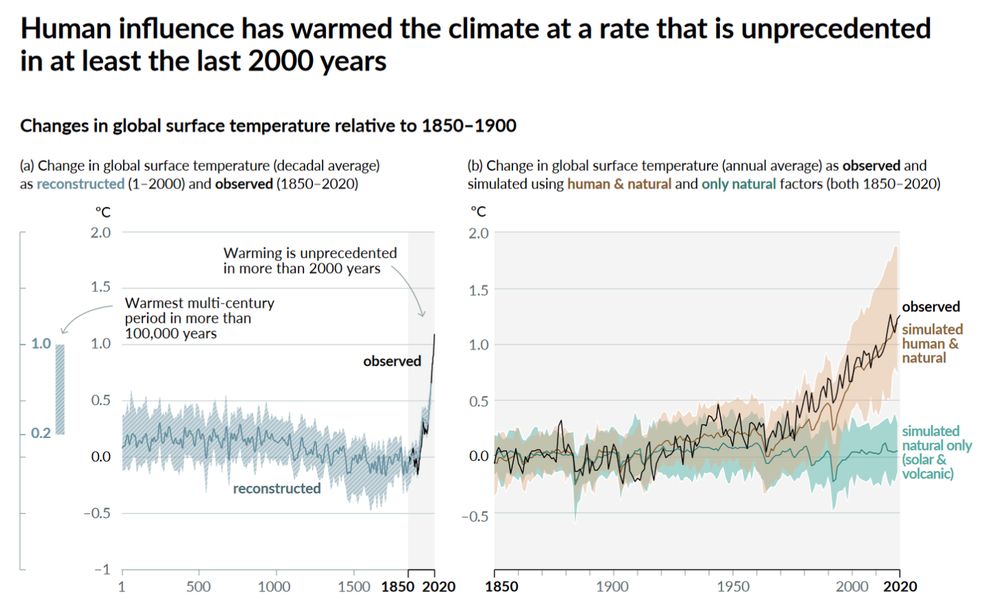
We talk a lot about the level of climate warming, have we passed a given threshold, and less about the rate. The rate is the core problem: we are changing climate faster than society or the environment can adapt. If it took 10,000 years to warm by 2 C, this would be a different conversation.
23.06.2025 23:25 — 👍 37 🔁 13 💬 2 📌 0
YouTube video by ASLO
ASLO 2025 Plenary: The Ruth Patrick Award is Presented to Peter Leavitt
If you are interested in lakes and the role of nitrogen pollution in degrading them, here's a summary talk of 30+ years of our research presented at #aslo this spring. www.youtube.com/watch?v=liIa...
04.06.2025 21:28 — 👍 7 🔁 3 💬 0 📌 0
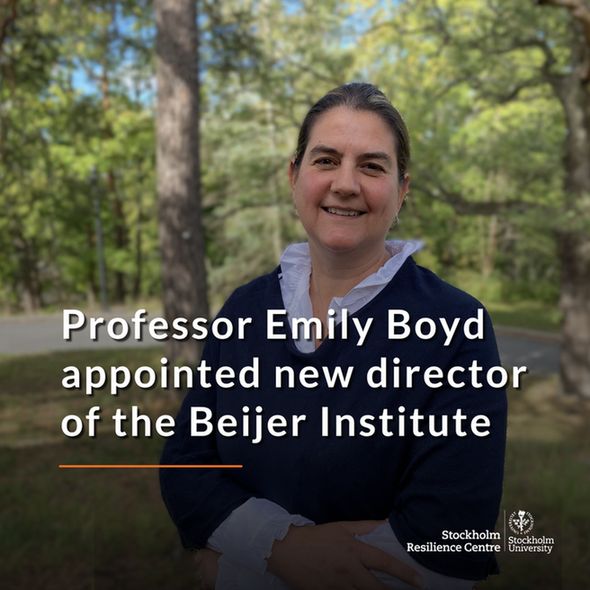
🎉 Congrats to Professor Emily Boyd, appointed as the new Director of the Beijer Institute! She joins from LUCSUS, where she’s served as Director for the past seven years.
We also wish to say a heartfelt thank you to Carl Folke, retiring in September, for his inspiring leadership over the years. 🌍💚
05.06.2025 09:08 — 👍 5 🔁 3 💬 0 📌 0
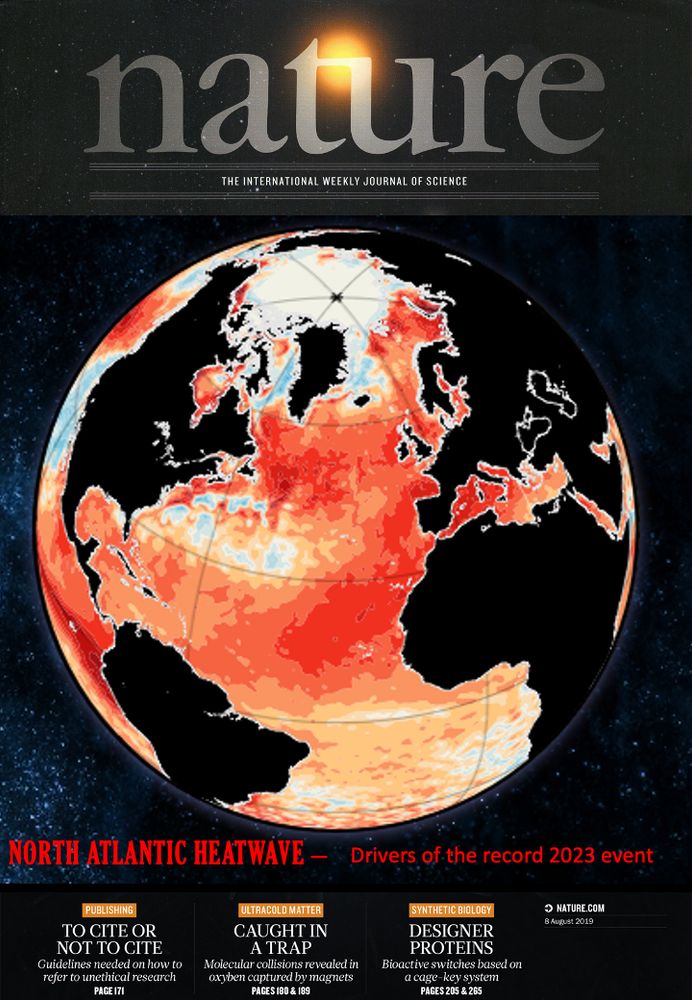
This is not the actual cover of Nature, just shown here for illustrative purposes. We did submit this figure for consideration for their cover. Print run in two weeks, we'll know by then if it gets used.
Out today in Nature, our paper on the drivers of the record 2023 summer heating of the North Atlantic. Temperatures warmed to record levels in just a few months. The impacts on climate & ecosystems were severe. A thread on how this work came about and what we found.👇👇🧵 www.nature.com/articles/s41...
04.06.2025 15:19 — 👍 571 🔁 259 💬 9 📌 19
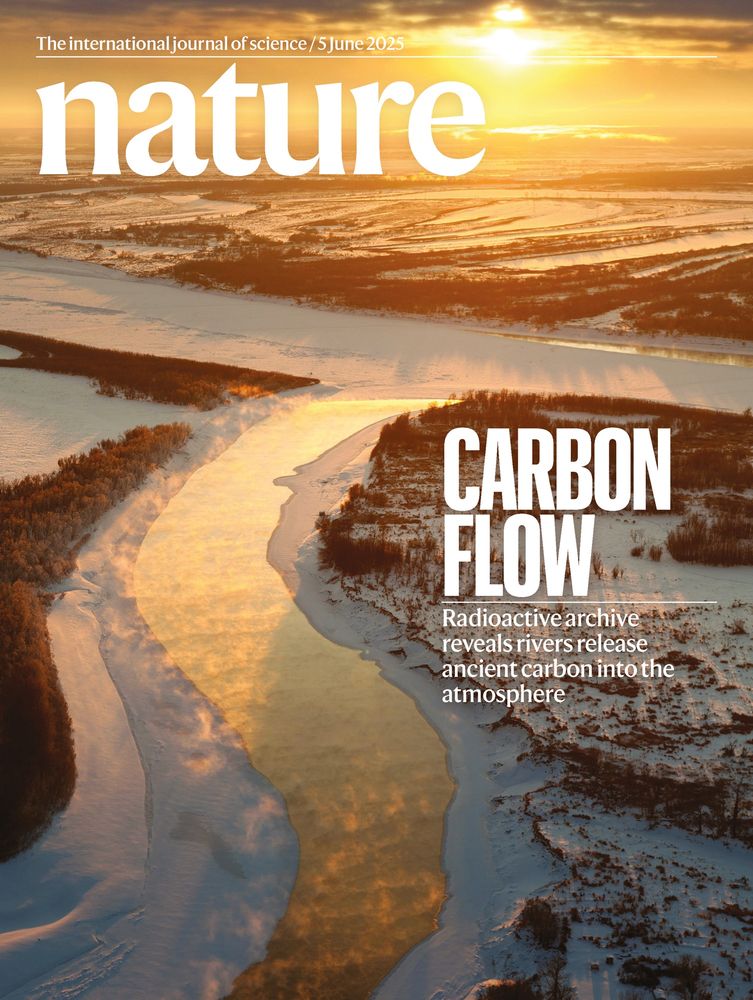
New paper! led by Josh Dean “Old carbon routed from land to the atmosphere by global river systems”
doi.org/10.1038/s415...
#radiocarbon in #rivers reveals the age of CO2 they release to the atmosphere.
An active leak of old carbon from land.
🧪⚒️
@joshfdean.bsky.social @oxuniearthsci.bsky.social
04.06.2025 15:26 — 👍 43 🔁 13 💬 2 📌 1

Office clean out days - amid the piles of paper, you can find some cool stuff @steve-carpenter.bsky.social
12.03.2025 15:20 — 👍 6 🔁 1 💬 0 📌 1

Thank you @steve-carpenter.bsky.social for an inspiring plenary on resilience to start our Great Lakes Conference! @iaglr.bsky.social
03.06.2025 17:05 — 👍 16 🔁 3 💬 0 📌 0

Michigan issues hundreds of new warnings about pollution in fish
After reviewing the latest research, health officials realized a common pollutant is more toxic than they knew.
Michigan is using the latest science to update PFAS fish advisories, crucial for Great Lakes communities.
@waynestateclas.bsky.social PhD student Brittanie Dabney spoke to @detroitnews.bsky.social on the risks. At @iaglr.bsky.social ? Don’t miss PFAS sessions today to learn the latest on PFAS!
05.06.2025 11:12 — 👍 6 🔁 3 💬 1 📌 0
At last an open society for Social-Ecological systems science, 25 years after the Millennium Ecosystem Assessment and more than 50 years after resilience and adaptive management concepts!
05.06.2025 11:32 — 👍 3 🔁 0 💬 0 📌 0
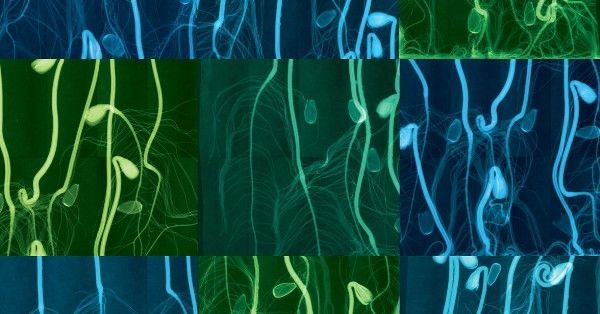
#NativePlants provide the foundation for environments to support #pollinators, butterflies, birds, and other life above and below ground.
However, the supply of #NativeSeeds to restore and conserve ecosystems often falls short of demand.
Learn more: ow.ly/hyPJ50VY4n2
26.05.2025 20:01 — 👍 7 🔁 5 💬 0 📌 1
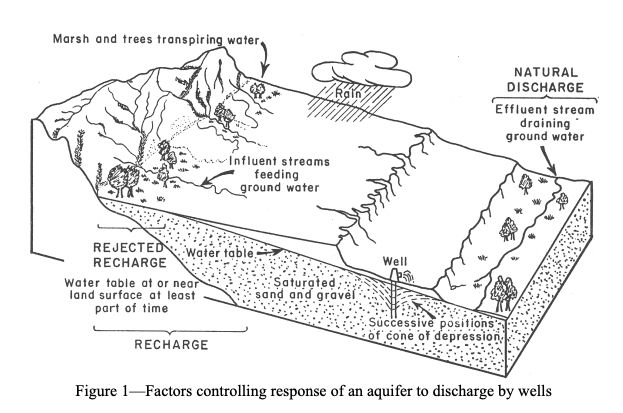
"All water discharged by wells is balanced by a loss of water somewhere." - Hydrogeologist C.V. Theis writing in 1940, nearly a century ago. From "The Source of Water Derived From Wells." water.usgs.gov/ogw/pubs/The...
17.05.2025 18:14 — 👍 24 🔁 8 💬 1 📌 0
🌍 The world’s leading guide to science-based climate solutions.
Visit www.drawdown.org to learn more
Exe. Dir. Global Carbon Project. Human effects on carbon & other biogeochemical cycles; vulnerability of C stocks; nature-based solutions; global ecology
The scientist formerly known as Lab Girl.
I write books: https://www.penguinrandomhouse.com/authors/2111914/hope-jahren/
SocSES advances the understanding of complex social-ecological systems dynamics, fosters collaboration among researchers and practitioners, supports the next generation of sustainability leaders, and leverages research for policy impact.
Restoring land & enriching lives – 1,200 acres of nature for science and community. Official UW–Madison Arboretum account.
We provide end-to-end data services that support science, policy, management, and industry in the Great Lakes. Part of the Integrated Ocean Observing System (IOOS).
Tell us what you love about the Great Lakes!
Explore groundbreaking news and research from PNAS, one of the world's most-cited scientific journals. Discover its sibling journal, @pnasnexus.org, both official journals of the National Academy of Sciences. Visit www.pnas.org for more info.
Helping bring Europe's freshwaters back to life.
Supported by @merlin-project.bsky.social
Feedback, news and contributions: info@freshwaterblog.eu
Read: https://freshwaterblog.net/
The Consortium of Universities for the Advancement of Hydrologic Science, Inc. (CUAHSI)'s mission is to empower the water community and advance science through collaboration, infrastructure, and education.
A multi-platform based global cyanobacterial harmful algal blooms monitoring. For more info please contact: cyanotracker@gmail.com (cyanotracker.uga.edu)
Forest ecologist & carbon cycle scientist at @PNNLab, open data & R proponent, mentor, editor. I know how to do a blind hem stitch.
Cutting-edge research, news, commentary, and visuals from the Science family of journals. https://www.science.org
National opinion columnist, Philadelphia Inquirer; author of After the Ivory Tower Falls; free weekly newsletter at inquirer.com/bunch
Marine chemist & animal lover
Sam Thielman | Graphic novels at NYT Book Review, seen New Yorker, Slate, Flaming Hydra, foreverwars.ghost.io | he/him | Public Multiversal Friend | cat subordinate | DC COMICS: THE STORY OF A UNIVERSE with Sean Howe forthcoming from HarperOne
Biodiversity | Ecology | Physiology | Theory | Climate Change | Macroecology | Scaling | biendata.org; Prof. EEB Univ of Arizona, External Prof Santa Fe Institute, Hon Assoc Res Oxford Univ UK; Proud father, Gift med en svensk🌵🇺🇸🇬🇧🇸🇪🌲
Promoting scientific inquiry, critical thinking, science education, and the use of reason in examining important issues. www.skepticalinquirer.org
#Climate-related activities of the National Academies of Sciences, Engineering, and Medicine / @nationalacademies.org retweet ≠ endorsement
A team of scientists & activists, in & around Yellowstone National Park. 501c3. Posting photos, ideas & solutions, because together, we can change the world.
Please report malicious trolls & imposters.
We are AltYelloNatPark™️
I like fish + fishing and study both as professor for integrative fisheries management (IFishMan) at Humboldt-Universität and IGB in Berlin. Editor of Fish Fish. and Z. für Fischerei. Father of two and into independent music. Read more at www.ifishman.de
















